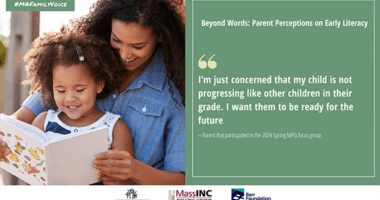Letter from The Education Trust to the U.S. Department of Education Regarding Proposed Guidance on State and Local Report Cards Under ESSA
U.S. Department of Education
Office of Elementary and Secondary Education
ATTN: Report Card Document
400 Maryland Avenue, S.W.
Washington, D.C. 20202
Dear Secretary DeVos,
On behalf of The Education Trust, an organization dedicated to closing long-standing gaps in opportunity and achievement that separate low-income students and students of color from their peers, thank you for the opportunity to provide public comments on the Department’s proposed guidance on interpreting the “Opportunities and Responsibilities for State and Local Report Cards Under the Elementary and Secondary Education (ESEA) Act of 1965, as amended by the Every Student Succeeds Act (ESSA) of 2015.”
Data on how well states, districts, and schools are serving different groups of students — both in terms of providing opportunities to experience a rigorous, well-rounded curriculum and in terms of the student outcomes we see as a result — are critical to helping families make informed decisions about their children’s education and helping communities push for needed change. The report card requirement in ESSA provides a framework for reporting data on how well students are being served by identifying which data states and districts should report. However, the law leaves many decisions to states, including how to report those data.
While the Department’s draft nonregulatory informational document provides helpful clarifications to states and districts about which data to report and how to report them, it must do more to ensure that state and district report cards are as useful as possible for their intended audience — families. The document should make the requirements to disaggregate data by student group more prominent and provide additional guidance on how to make report cards — especially per-pupil spending data —accessible to families.
Disaggregation by Student Group
ESSA requires states and local education agencies (LEAs) to report most data elements disaggregated by student subgroups — including major racial/ethnic groups, students from low-income families, English learners, and students with disabilities. This is a critical civil rights component of the law, and yet, the requirement is not addressed prominently enough or clearly enough in the document. The guidance document must explicitly outline these reporting requirements to ensure that report cards highlight important information about how well states are serving all students, particularly historically underserved groups of students (i.e., students from low-income families, students of color, English learners, and students with disabilities).
Per-Pupil Spending
States have long reported certain data elements that are now required under ESSA. But for the first time, states must disclose per-pupil spending at each public school. This new requirement presents an incredible opportunity to shed light on how per-student spending varies within districts, that, if calculated and reported well, could drive practice change. While the guidance document provides information on how states might calculate per-pupil expenditures — for example, it points out that there’s value in setting a statewide uniform procedure for calculating the data — it fails to give states enough guidance on how to report the data in a way that is clear and compelling and puts the spending differences in context. The guidance should identify and point states to more resources that will help them develop school-level per-pupil spending reports that are understandable and concise.
State Production of Report Cards
ESSA mandates that state and local report cards be concise, usable, understandable, and widely accessible. While the guidance offers resources and tips on creating report cards that are easy to access and understand, it misses a critical step states can take to ensure that report cards meet this requirement: The guidance should urge states to produce uniformly formatted report cards for LEAs and schools.
The enclosed attachment provides more specific recommendations on each of the points raised above; it also offers additional suggestions for making the report cards useful tools for families and other stakeholders to determine whether schools, districts, and states are serving students—particularly those from historically underserved backgrounds—well.
Sincerely,

Ary Amerikaner
Vice President for P-12 Policy, Research, and Practice
The Education Trust











